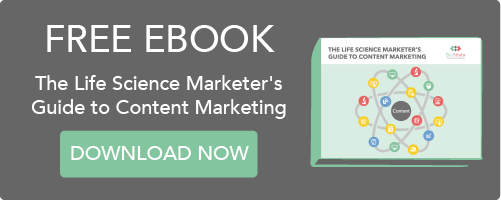Physics and marketing are, in many ways, worlds apart. One seeks to explain the processes and phenomena of the natural world through scientific enquiry, while the other is concerned with understanding and influencing customer behaviour.
That said, marketers can learn a lot from applying the skills of a physicist to their own craft; namely by taking a scientific approach to their marketing efforts, so they can scrutinise – and learn from – their results. Content marketing not only facilitates this with its data-driven methodology, it also caters for the consumer-oriented modern marketing zeitgeist.
The spirit of scientific laws can also be useful when applied to the marketing realm. For instance, Newton’s three laws of motion provide a fitting framework for the natural “rules” of what works – and what doesn’t – in content marketing.
With a fair dose of liberty, here are Newton’s three laws of content marketing:
1. Content marketing inertia.
As a quick refresher, Newton’s first law of motion states that an object at rest stays at rest, and an object in motion stays in motion with the same speed and in the same direction unless acted upon by a force.
In the context of content marketing, this can be understood in terms of productivity and the need to take a consistently proactive approach to your marketing strategy. Once you get started with content marketing, it is much easier to keep it going – you get in the flow of things and the inspiration will keep coming! The key is to build a healthy momentum with your content creation, driven by a sound overall strategy.
The law of inertia also applies to your SEO efforts. More specifically, if you aren’t actively doing anything to improve your SEO, it will stagnate no matter how well-optimised your web pages are. Frequent blogging and content creation are your object in motion, while the improvement of SEO is the continual motion. In other words – a blog at rest keeps SEO at rest, while a blog in motion keeps your SEO in motion.
Key lesson: Continuously create new and insightful content to keep your content marketing strategy in motion.
2. Content marketing relies on momentum.
In its most simplified form, Newton’s 2nd law states that an object accelerates when a force acts upon it. It’s more often phrased in terms of the net force, which is proportional to the acceleration and inversely proportional to the object’s mass; i.e., F = ma.
Translated into ‘content-speak’, we have the following: The impact of your content marketing (the net force) will only be as strong as the gravity of your content (the mass) and how often new content reaches your target (the acceleration). Frequent blogging of high-quality content that’s strategically shared across social platforms to maximise exposure are fundamental components of an effective content marketing strategy. It’s also important to note that if either of these two factors is lacking, the impact of your content marketing strategy will suffer.
Key lesson: High-quality content and ample exposure are needed for effective content marketing.
3. Reader response will be equal to the effort you put in.
Newton’s 3rd law states that for every action, there is an equal and opposite reaction. This is the physical law that (much to the dismay of my infant self) makes it impossible to pick yourself up off the ground, no matter how strong you are.
Applied to content marketing, this means that for every piece of content you put out there, your audience will react. If you put out high quality and engaging content, you will get a good response; but if you don’t put the effort in and only post once in a while, you’ll get an equally underwhelming showing from your readers. Similarly, if the quality of your content is poor and visibly lazy, you’ll likely get a negative reaction from your audience. Simply put – if you want outstanding results, you’ll need to make an outstanding effort.
Key lesson: Your content marketing will only be as good as the effort you put in.
To learn more about how content marketing can bolster your company’s marketing strategy, download your free copy of our Life Science Marketer's Guide to Content Marketing.





